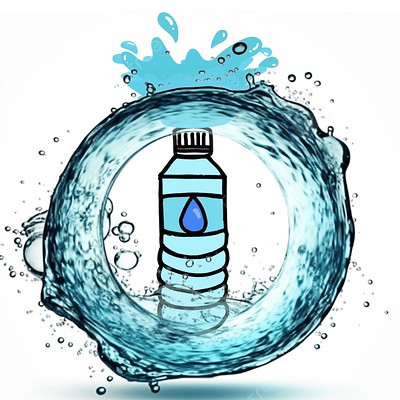
Water, a mystical object that holds our universe in place with all different types and forms. Sparkling water, tap water, Aquafina, but is there a difference between waters? A confounding question that we, as humans wonder about as our Roman Empire on a weekly basis. Water at Dougherty Valley is limited to a various number of water fountains and refilling stations. Some of us say that all water is the same, water has all the same components as each other. Others of us, including myself, believe that water has a unique taste based on the brand and our personal preferences. Water tastes differently due to varying levels of minerals and our internal personalities which leads us to our unique tastes.
Initially, water seems bland, boring, and frankly, a tad repetitive based on its outward appearance. But underneath these layers is a world of various tastes and experiences that cannot be comprehended. From the graceful spring water of Arrowhead to the rich and sophisticated flavor of Fiji water, produced from the volcanic rock of the island of Fiji. But what difference does each and every one of these brands and types make?
All water has several different minerals that make each sip unique. In a 2013 study by the National Library of Medicine, they concluded that there was increased taste perception of water due to four prevalent minerals, bicarbonate, sulfate, calcium, and magnesium. For example, calcium can give water a pasty texture while magnesium adds a metallic flavor. These minerals are picked up through filtration through the ground or environment. Limestone-rich areas, such as Kentucky or New York lead to more unique minerals to be heavily concentrated in their water supplies. San Ramon however, receives its water from snowmelt in the Sierra Nevada, roughly 160 miles away.
Water often tastes pleasant or distasteful depending on the location or source. For instance, water in a highly esteemed restaurant in San Francisco, served in a sparkling, translucent glass might taste different than a water fountain at a local park. Water from the Sierra Mountains may taste different from water from the Mississippi river.
Taste receptor cells or TRCs, are in all humans. The five basic tastes, bitter, sweet, sour, salty, and umami, each contribute to the overall taste of water. They also affect our perception of the food that we taste. For example, Dasani water includes an underlying salty flavor due to the reverse osmosis. Reverse osmosis is a water treatment process in which of the minerals are taken which means the detrimental minerals are gone as well as the healthy ones. As a result, Dasani adds an artificial blend that triggers the salty and sour taste receptor cells.
If this doesn’t refute evidence that water is different, there are even professional water tasters, also known as water sommeliers. Doran Binder, a water sommelier from the United Kingdom, includes evidence based on how water’s natural minerals add palatable flavor as well as health benefits. These include improved blood circulation, lowered blood pressure, and so much more.
Some may state that water is all the same, all uniformly equal. However, not one water source, not even one water bottle is created equally as there are varying miniscule amounts of bicarbonate and calcium in every sip.
Simply put, water has an array of different textures and flavors that are explored around the world. But this can be even accomplished in the walls of your own home. Gather a sample of tap waters or various water bottle brands such as Arrowhead, Dasani, and Voss, and notice the magical, life-changing difference between each one.






